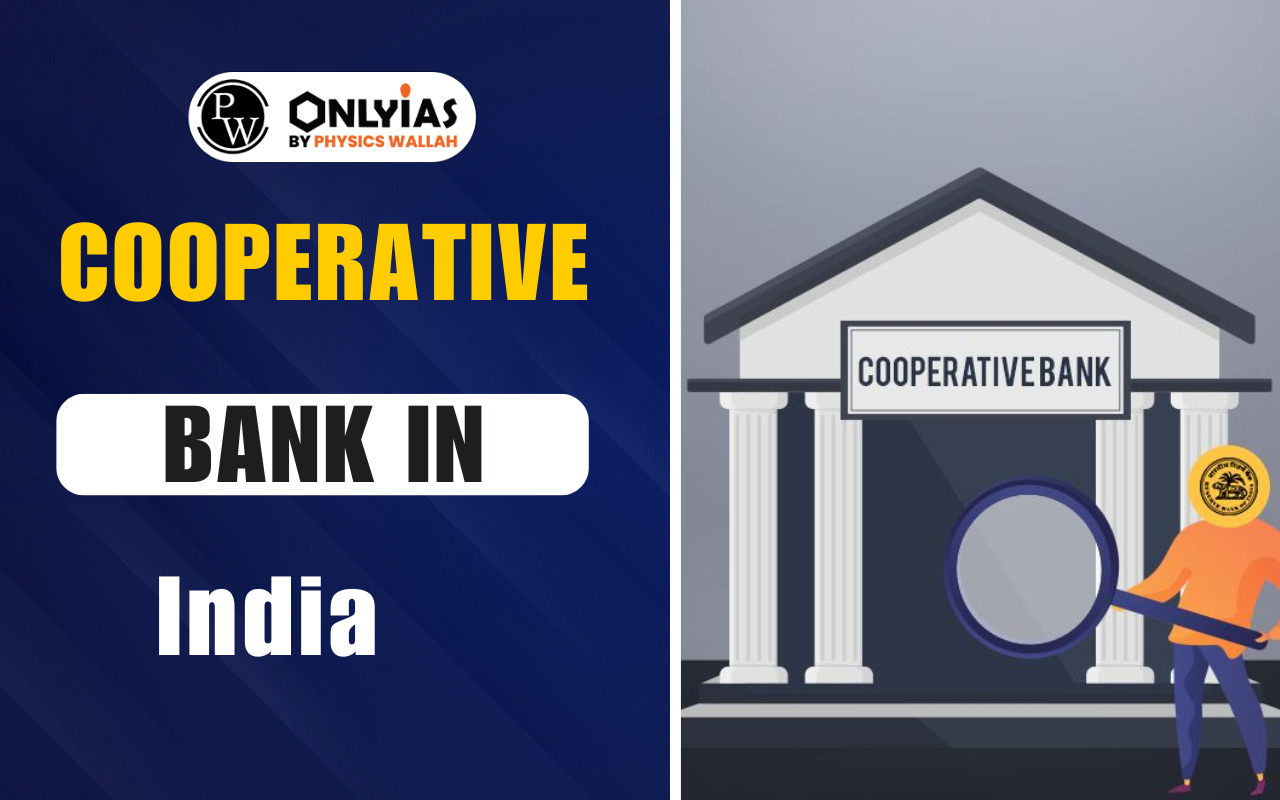Cooperative Banks in India 2025 are member-owned financial institutions supporting rural and urban communities. Regulated by RBI and NABARD, they operate in a three-tier structure: State, District, and Village-level banks. India has 1,457 Urban, 34 State, 351 District, and 1 Industrial Cooperative Bank. They offer affordable credit to farmers, small traders, and underserved populations.

Cooperative Banks in India 2025 are an important part of the country’s banking system. They provide services to both rural and urban communities. These banks work on the principle of cooperation and mutual help. Members own and manage them, which makes them different from commercial banks.
In 2025, cooperative banks continue to grow under the guidance of the Reserve Bank of India (RBI) and NABARD. They serve farmers, workers, small business owners, and people who may not easily access large banks. Here we will cover what is cooperative bank in India, the structure of cooperative banks in India, and the types of cooperative banks in India.
As of 2025, Cooperative Banks in India 2025 form a strong network across the country. The system includes 1,457 Urban Cooperative Banks, 34 State Cooperative Banks, 351 District Central Cooperative Banks, and 1 Industrial Cooperative Bank (Tamil Nadu Industrial Cooperative Bank).
These banks are under the supervision of RBI and NABARD. Together, they provide loans to millions of people. By March 2025, the total loans outstanding had reached more than ₹11.33 lakh crore. This shows how important they are in supporting agriculture, housing, and small businesses. Check the Cooperative Banks in India 2025 overview table below:
| Cooperative Banks in India 2025 Overview | |||
| Type of Cooperative Bank | Number of Banks (2025) | Supervising Authority | Key Role |
| Urban Cooperative Banks (UCBs) | 1,457 | RBI | Provide financial services in urban and semi-urban areas |
| State Cooperative Banks (StCBs) | 34 | NABARD & RBI | Apex banks for cooperative credit structure at the state level |
| District Central Cooperative Banks (DCCBs) | 351 | NABARD & RBI | Provide credit and banking facilities at the district level |
| Industrial Cooperative Bank | 1 (Tamil Nadu Industrial Cooperative Bank) | RBI | Supports industrial and small-scale units |
A cooperative bank is a financial institution owned and run by its members. The members are both the customers and the owners. They pool their resources to create funds that can be used for lending.
These banks are formed on the principle of mutual help. They do not work only for profit. Their aim is to provide affordable credit and banking services to people who need them most. This makes cooperative banks vital for small farmers, shopkeepers, and workers in local communities.
The answer to who regulates cooperative banks in India, then it lies in the dual regulatory system. This is a multi-level regulation that ensures that Cooperative Banks in India work in a disciplined and transparent manner. While also serving their required functions to people.
The structure of cooperative banks in India is three-tiered. This three-tier structure is to make sure that credit flows smoothly from the top level down to the smallest village. In fact, this structure also ensures that the needs of farmers and rural communities are met without any delay.
There are three major types of Cooperative Banks in India, which are divided based on the areas they serve. Here we have discussed all three types of Banks in detail.
An urban co-operative bank provides services in cities and towns. It focuses on individuals, small traders, and service providers. These banks give loans for housing, education, personal use, and small businesses.
As of 2025, there are 1,457 urban cooperative banks. They are especially useful for people who may not find large commercial banks easily accessible.
State Co-operative Banks are the highest-level banks in each state. They control and guide other cooperative banks within the state. They also provide funds to district banks.
In 2025, there are 34 State Cooperative Banks in India. They play an important role in financing agriculture and development projects at the state level.
District Central Co-operative Banks (DCCBs) operate at the district level. They act as the middle link between state cooperative banks and village-level societies.
There are 351 DCCBs in India as of 2025. They provide loans for farming, cattle rearing, and local industries. They ensure that rural credit reaches small farmers on time.
The first cooperative bank in India was the Anyonya Co-operative Bank in Vadodara, Gujarat. It was set up in 1904 under the Cooperative Societies Act. Though this bank closed later, it started the cooperative banking movement in India. Today, thousands of cooperative banks follow the path laid down by it.
Provided here is the complete list of the Cooperative Banks in India 2025. This is the updated list as per the current year. One can check the table below:
| List of Cooperative Banks in India | ||||
| State/UT | Urban Cooperative Banks | State Cooperative Banks | District Central Cooperative Banks | Industrial Cooperative Bank |
| Andaman & Nicobar | 0 | 1 | – | – |
| Andhra Pradesh | 41 | 1 | 13 | – |
| Arunachal Pradesh | 0 | 1 | – | – |
| Assam | 7 | 1 | – | – |
| Bihar | 2 | 1 | 23 | – |
| Chandigarh | 0 | 1 | – | – |
| Chhattisgarh | 12 | 1 | 6 | – |
| Daman & Diu | 0 | 1 | – | – |
| Goa | 3 | 1 | – | – |
| Gujarat | 211 | 1 | 18 | – |
| Haryana | 7 | 1 | 19 | – |
| Himachal Pradesh | 5 | 1 | 2 | – |
| Jammu & Kashmir | 4 | 1 | 3 | – |
| Jharkhand | 2 | 1 | 1 | – |
| Karnataka | 250 | 1 | 21 | – |
| Kerala | 58 | 1 | 1 | – |
| Madhya Pradesh | 47 | 1 | 38 | – |
| Maharashtra | 458 | 1 | 31 | – |
| Manipur | 3 | 1 | – | – |
| Meghalaya | 3 | 1 | – | – |
| Mizoram | 1 | 1 | – | – |
| Nagaland | 0 | 1 | – | – |
| Delhi | 14 | 1 | – | – |
| Odisha | 9 | 1 | 17 | – |
| Puducherry | 0 | 1 | – | – |
| Punjab | 4 | 1 | 20 | – |
| Rajasthan | 34 | 1 | 29 | – |
| Sikkim | 1 | 1 | – | – |
| Tamil Nadu | 128 | 1 | 23 | 1 |
| Telangana | 51 | 1 | 9 | – |
| Tripura | 1 | 1 | – | – |
| Uttar Pradesh | 54 | 1 | 50 | – |
| Uttarakhand | 5 | 1 | 10 | – |
| West Bengal | 42 | 1 | 17 | – |
| Total | 1,457 | 34 | 351 | 1 |
Ready to boost your UPSC 2026 preparation? Join PW’s UPSC online courses today!
It is a financial institution owned and run by its members, based on cooperation and mutual help.
They are regulated by the RBI, NABARD, and supported by the Ministry of Cooperation.
India has 1,457 Urban Cooperative Banks, 34 State Cooperative Banks, 351 District Central Cooperative Banks, and one Industrial Cooperative Bank.
The first was the Anyonya Co-operative Bank in Gujarat, set up in 1904.
It has three levels: state banks, district banks, and village-level credit societies.
<div class="new-fform">
</div>
